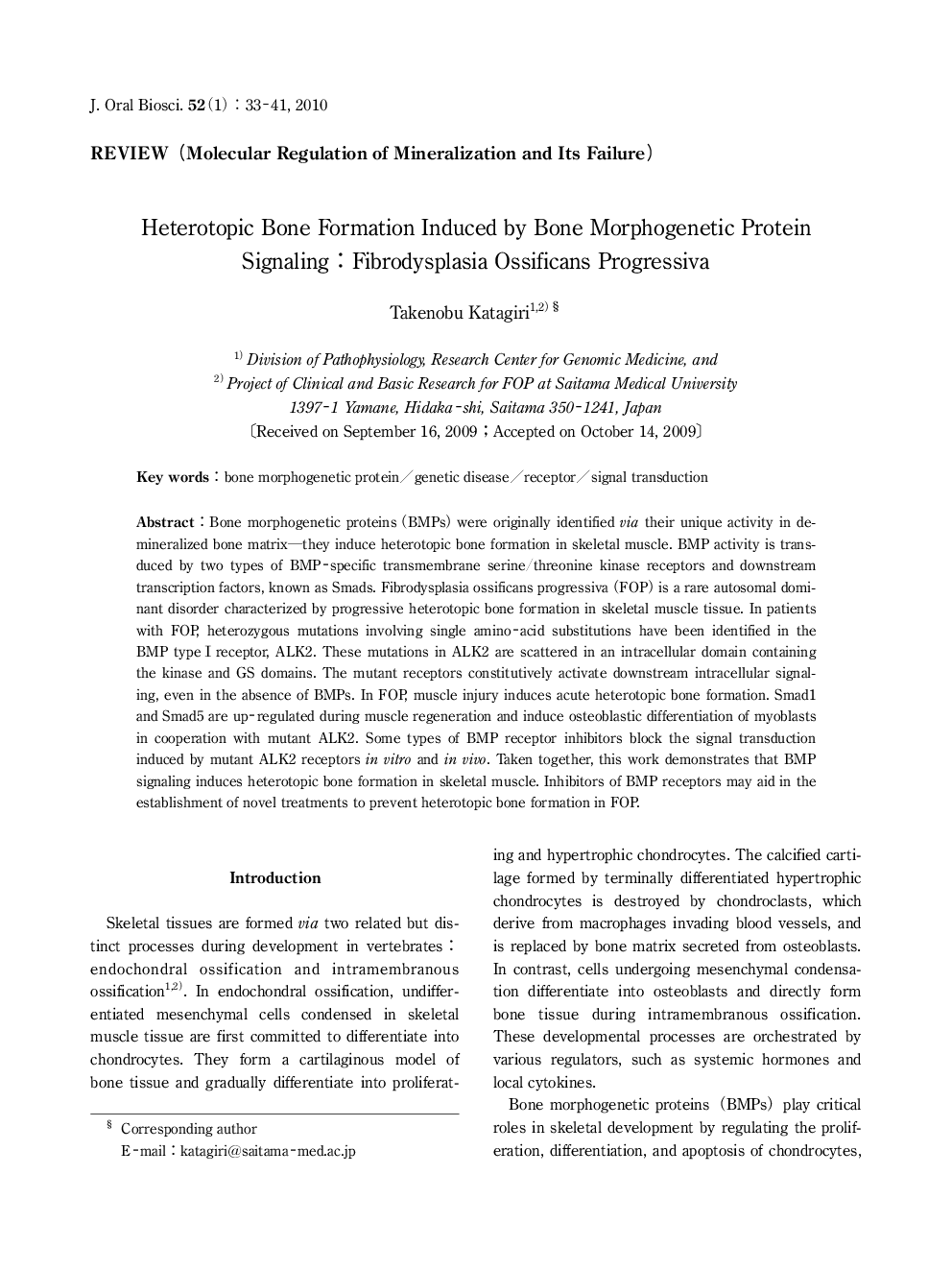| Article ID | Journal | Published Year | Pages | File Type |
|---|---|---|---|---|
| 2776943 | Journal of Oral Biosciences | 2010 | 9 Pages |
Bone morphogenetic proteins (BMPs) were originally identified via their unique activity in demineralized bone matrix—they induce heterotopic bone formation in skeletal muscle. BMP activity is transduced by two types of BMP-specific transmembrane serine/threonine kinase receptors and downstream transcription factors, known as Smads. Fibrodysplasia ossificans progressiva (FOP) is a rare autosomal dominant disorder characterized by progressive heterotopic bone formation in skeletal muscle tissue. In patients with FOP, heterozygous mutations involving single amino-acid substitutions have been identified in the BMP type I receptor, ALK2. These mutations in ALK2 are scattered in an intracellular domain containing the kinase and GS domains. The mutant receptors constitutively activate downstream intracellular signaling, even in the absence of BMPs. In FOP, muscle injury induces acute heterotopic bone formation. Smadl and Smad5 are up-regulated during muscle regeneration and induce osteoblastic differentiation of myoblasts in cooperation with mutant ALK2. Some types of BMP receptor inhibitors block the signal transduction induced by mutant ALK2 receptors in vitro and in vivo. Taken together, this work demonstrates that BMP signaling induces heterotopic bone formation in skeletal muscle. Inhibitors of BMP receptors may aid in the establishment of novel treatments to prevent heterotopic bone formation in FOP.
